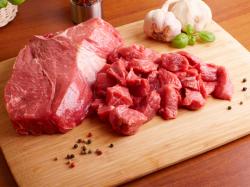New Flexible Packaging Films Launched By UK's LINPAC Packaging
February 21, 2012 | 2 min to read

In line with its new ‘Fresh Thinking’ innovation strategy, Europe’s leading multi-material food packaging company, LINPAC Packaging, has launched two new PP films for fresh meat, poultry and fish packaging.
Both films – LINtop PP HB Lock Seal and LINtop PP HB Peelable – guarantee to meet the best shelf-life targets in the PP market, helping manufacturers, retailers and consumers to reduce food waste and spoilage – critical in today’s cost-conscious, recessionary marketplace.
Manufactured at the company’s Pontivy flexible films factory in France, both products are formulated to seal on a variety of PP trays, to run smoothly in machines and to seal through contamination to ensure a safe and secure pack.
The lock-seal film option is available in two gauges – 35μ and 42μ – with the 35μ being one of the lowest gauges on the market, resulting in cost-savings and a low carbon footprint in line with retailers’ sustainability strategies. LINtop PP HB Lock Seal outperforms other films’ anti-fog qualities and has excellent transparency for good on-shelf presentation.
LINPAC Packaging’s LINtop PP HB Peelable film offers safe and easy peelability, coming away from the tray in one piece. It is in line with the best market offerings for anti-fog efficiency and oxygen-barrier properties, and outperforms most films for transparency qualities.
The new films have been carefully engineered to ensure they are fit-for-purpose and will perform to a high standard while having a low gauge to minimise their environmental footprint.
Jo Stephenson, LINPAC Packaging’s Vice President Marketing & Innovation, said: “At LINPAC Packaging we are committed to driving our Fresh Thinking innovation strategy to meet the needs of food manufacturers, retailers and consumers. We feel that we have achieved that in the design of these new innovative, market-leading films. LINtop films are easy to handle and complement a wide range of PP trays – driving efficiency on the factory floor and providing a long shelf-life for food products. This helps retailers to reduce waste, as well as keeping food fresh and looking attractive for longer – which will ultimately encourage consumers to buy.”
Source: LINPAC
